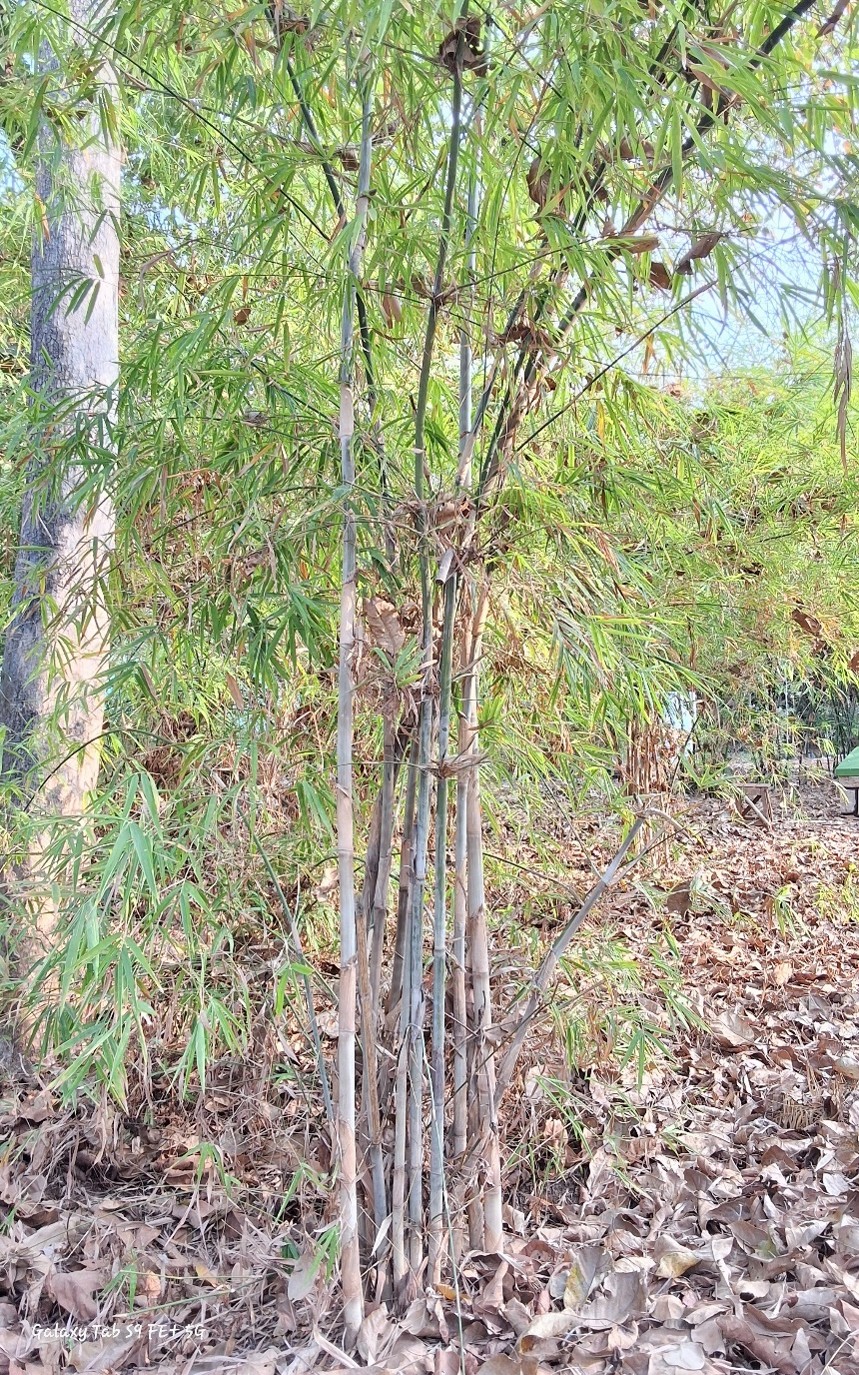Bambusa polymorpha

Bambusa polymorpha
Bambusa polymorpha also known as Polymorphic Bamboo or Indian Giant Bamboo, is a clumping bamboo species native to tropical and subtropical regions, particularly in India, Bangladesh, Myanmar, and parts of Southeast Asia. It is also cultivated in tropical regions such as Africa and the Caribbean. Typically found in moist forest areas, riverbanks, and hilly terrains, Bambusa polymorpha thrives in altitudes ranging from 300 to 1200 meters. It prefers fertile, well-drained loamy soils but can tolerate a variety of soil types. This bamboo species benefits from a rainfall range of 1500–3000 mm annually, which supports its dense growth.
The culms of Bambusa polymorpha are tall, reaching heights of 15 to 20 meters, with diameters between 6 and 12 cm. The culms start green and darken with age, sometimes acquiring a tinge of yellow. The internodes are 30 to 45 cm long, and the culm sheaths are initially green, turning pale brown as they mature. The adaxial surface of the culm sheath is smooth and glabrous, while the abaxial surface is covered with fine, appressed hairs, and the margin has ciliate bristles.
The leaves of Bambusa polymorpha are oblong-lanceolate, measuring 20 to 35 cm in length and 2.5 to 4.5 cm in breadth, with pointed tips. The inflorescence is a large panicle with spicate branching. The empty glumes are ovate, acute, and faintly nerved, while the flowering glumes are larger, with ciliate edges and exserted stamens. The anthers are glabrous, and the style has fine hairs. Flowering occurs in rare, gregarious cycles, typically every 30 to 50 years, and has been reported in India and Southeast Asia. The seeds are small and non-viable, with low germination rates, leading to propagation through clump division, offsets, culm cuttings, and tissue culture.
Bambusa polymorpha is widely used in construction for scaffolding, poles, and building materials. It is also utilized in the production of furniture and handicrafts, as well as in pulp and paper production. Additionally, it plays an important role in controlling soil erosion, particularly in hilly areas. The bamboo's edible shoots are consumed in some regions, and it is also cultivated for ornamental purposes in gardens and landscapes.
Listen Audio:
Need assistance? BRTC Faculty